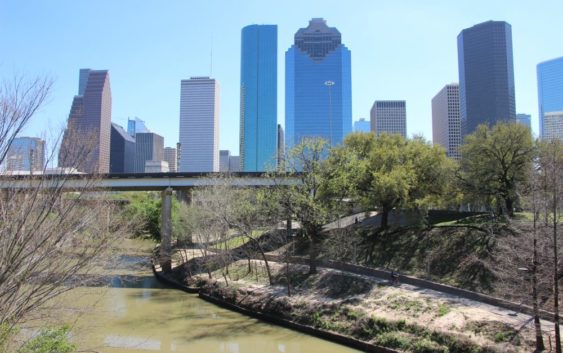- One year after devastating Panhandle wildfires, Canadian resident reflects on the work of rebuilding
- Hays County judge says software glitch caused some communication issues during wildfires
- FEMA deadline for Hurricane Helene recovery aid to governments, nonprofits extended
- Sellers and Rantanen are among the NHL trade deadline winners. Hurricanes and Boeser are some losers
- Hurricane forecasters express concern over NOAA job cuts impact
Weather mild in Houston for now. But it’s not too early to be prepared for severe weather season, meteorologist says

As the northeastern U.S. weathers a winter storm, and an atmospheric river has California bracing for flooding, here in Houston, it’s mostly quiet with mildly cooler this week.
While things are calm, this may be a good time to discuss plans for severe weather, Jeffry Evans said. Evans is meteorologist in charge with the National Weather Service Houston/Galveston.
“This is just a good time of year to evaluate things and figure out where you would go if a tornado warning was issued for your area,” he said. He also said it’s a good time to look at potential damage around the house. “Take a look at the trees around the house. Is this a good time to limb up some trees that could come down?”
Evans said as Houston’s inevitable heat wave makes its way to the area, there are some things to remember. Most importantly: there are health risks to being in the climate.
“It’s really people being honest with themselves and understanding that there are health risks with heat,” he said. “We live in a hot, humid climate, we’re used to that, but you still have folks who might push it too far, working in the yard.”
He said it’s also good to check on people during the weather, especially elder people, or people who may not have air conditioning that they can run frequently. Infant deaths due to heat are still an issue in Texas, too, he said.
“Check the backseat,” Evans said. “Leaving children in cars occasionally in Texas, we still deal with some of those deaths that are very, very preventable.”
Last summer, triple digit temperature days were common, and Evans said it’s possible that it could be the same situation this year.
“I wouldn’t be surprised to see some above-normal projections come out for the June/July/August time-frame.”
As all eyes are on other parts of country as they deal with severe weather, Evans said there is a lot of terminology that might have those who aren’t familiar with it scratching their heads. Like, “Nor’easter”.
“A nor’easter … they’re basically wintertime storms in the northeast. They’re called northeasters because these lows really balm out, really deepen, really strengthen, as they get over the Atlantic Ocean and it brings a lot of northeast winds into New England and those areas, a lot of heavy snow and rain.”
In California they are dealing with an “atmospheric river”. That, Evans said, is a steady stream of moisture coming in with the weather system.
“Traditionally the term is used for the Pacific systems,” Evans said. “So these lows that come into California and tap into a long, deep stretch of moisture and really slams them hard.”